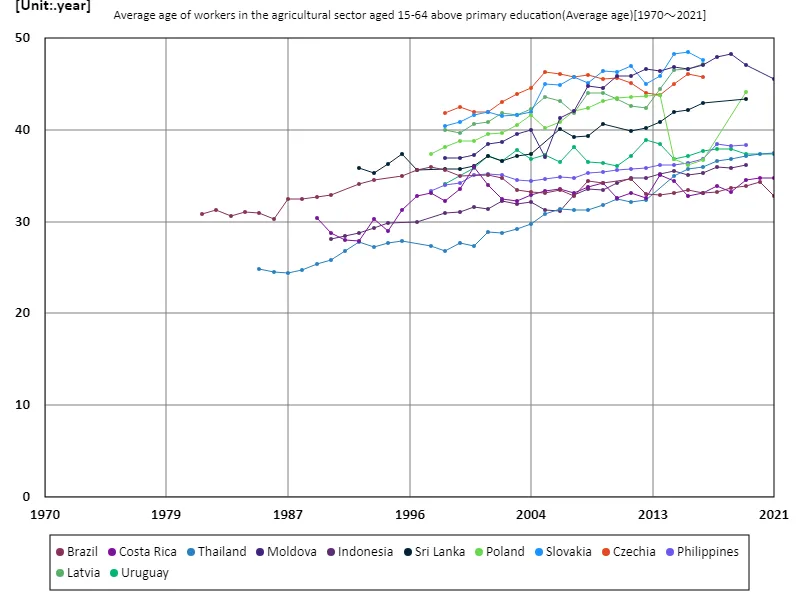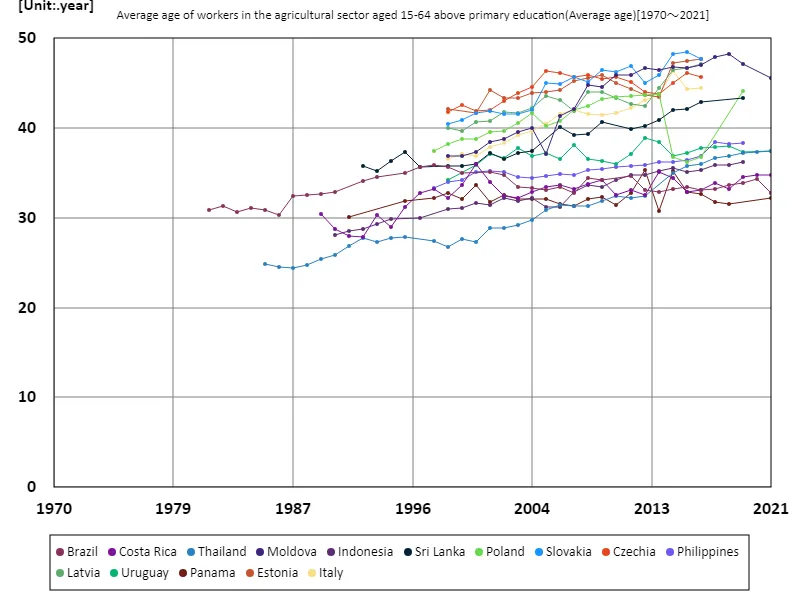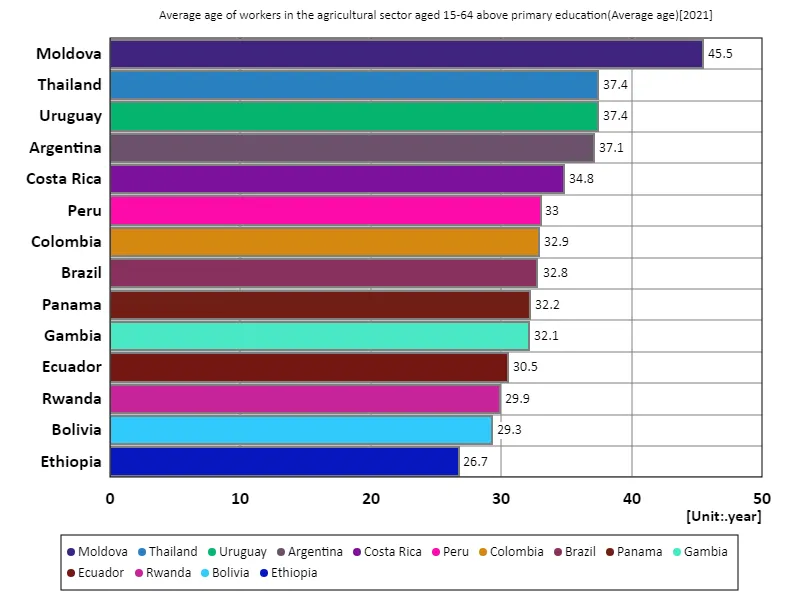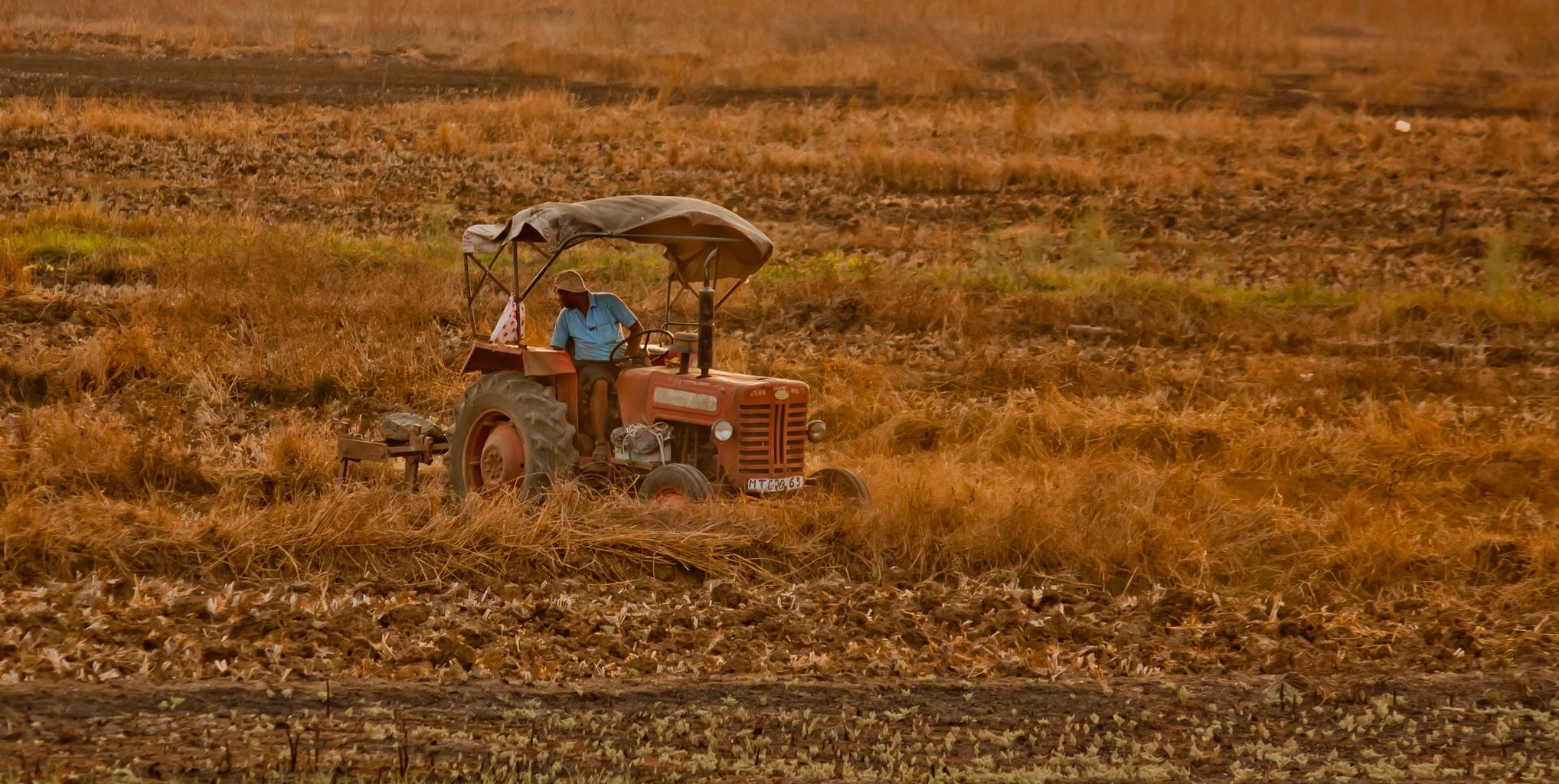- Abstract
- Agricultural sector, workers aged 15-64 with secondary education or higher, average age
- Agriculture sector, workers aged 15-64 with secondary education or higher, average age (worldwide)
- Agricultural sector, workers aged 15-64 with secondary education or higher, average age (world countries, latest year)
- Reference
Abstract
Data showing that the average age of workers aged 15-64 in Moldova’s agricultural sector is 45.5 years indicates that the country’s agricultural sector is aging. This is likely due to the fact that many young people are moving to cities and other industries, while the workforce in agriculture is skewed towards older workers. Another contributing factor to the aging population is the lack of workers in this sector with a secondary education or higher. In general, workers in the agricultural sector tend to be slow to update their knowledge and technology, and with little entry of young people into the industry, innovation in the industry can stagnate. In order to counter this, it is necessary to attract young people to the agricultural sector and to improve education and training.
Agricultural sector, workers aged 15-64 with secondary education or higher, average age
The average age of workers aged 15-64 in the Slovak agricultural sector was recorded at 48.5 years in 2015, which is part of a longer-term ageing trend. The data suggests that the agricultural sector is ageing and there is limited entry of workers, especially those with post-secondary education. In cases like Slovakia, where there has been a 98.2% decline from the peak, this is due to a change in the age structure of workers in the agricultural sector, resulting in a decrease in the influx of younger workers. This could slow agricultural productivity and the rate of technological innovation. In addition, as the population ages, it is urgent to introduce efficient agricultural technologies and encourage young people to enter the agricultural sector. Overall, ageing in the agricultural sector requires deeper consideration of its impact on structural changes in the labour market and economic growth.


The maximum is 48.5year[2015] of Slovakia, and the current value is about 98.2%
Agriculture sector, workers aged 15-64 with secondary education or higher, average age (worldwide)
Data showing that the average age of workers with secondary education or above aged 15-64 in South Korea’s agricultural sector was recorded at 51.6 years in 2017 indicates that the sector is facing extreme aging. This ageing population means that the majority of agricultural workers are older, reflecting little entry by younger people into the industry. In South Korea, the average age remains at 100% compared to the peak in 2017, indicating that the aging of the population continues. This trend is driven by factors such as harsh working conditions and low wages in the agricultural sector, as well as population migration to cities. Furthermore, the introduction of technological innovation and increased productivity requires a young workforce, but it is difficult for them to enter the workforce. The aging of the population is likely to lead to a decline in agricultural productivity and competitiveness, so policies need to support young people and promote technological innovation to increase the attractiveness of the agricultural sector. Overall, the ageing of South Korea’s agricultural sector highlights challenges to its future sustainability.


The maximum is 48.5year[2015] of Slovakia, and the current value is about 98.2%
Agricultural sector, workers aged 15-64 with secondary education or higher, average age (world countries, latest year)
Data for 2021 shows that the average age of workers with secondary education or higher aged 15-64 in Moldova’s agricultural sector is 45.5 years, the highest overall. This reflects the ageing of the agricultural sector. The aging population in countries like Moldova is due to the migration of young people to urban areas, harsh working conditions in agriculture, and low wages. The overall average age is 33.7 years old, highlighting the age bias in the agricultural sector. Particularly in countries like Moldova where the population is ageing significantly, there is a risk that industrial vitality will be lost, leading to reduced productivity and efficiency. In addition, the ageing of the agricultural sector’s workforce with secondary education or higher can slow the adoption of new technologies and knowledge. In order to combat this, it is necessary to encourage young people to enter the agricultural sector and to improve education and training systems. Overall, the ageing of the agricultural sector is a challenge to economic growth that requires a policy response.


The maximum is 45.5year of Moldova, the average is 33.7year, and the total is 472year



Comments